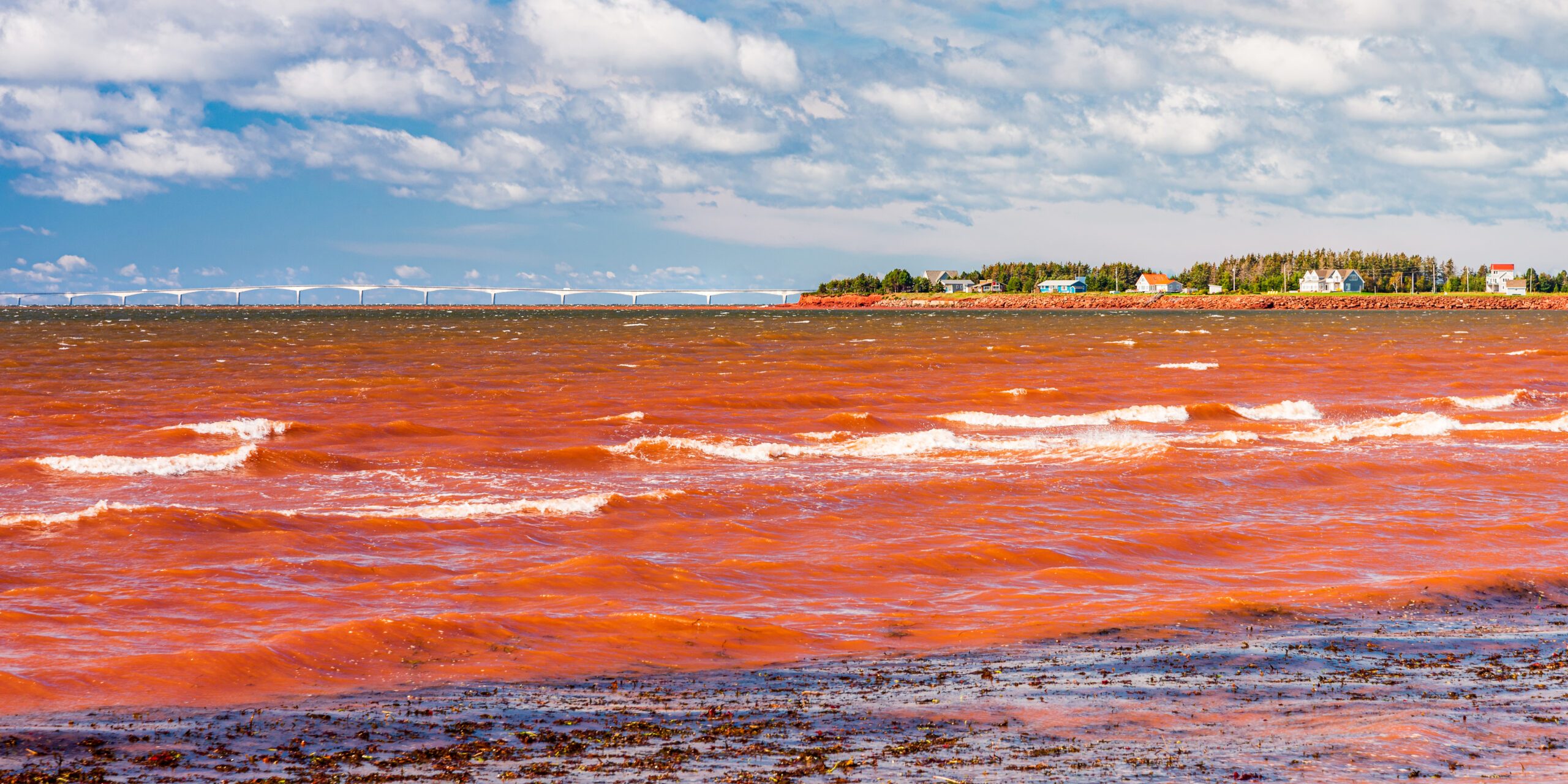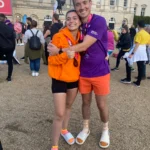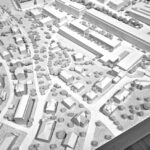The Sea Is Turning Red! Researchers Make Breakthrough Discovery That Could Help Forecast Dangerous Algae Blooms

The ocean, once a symbol of calm and life, is becoming a silent threat. Along coastal communities around the world, a new menace is spreading—red algae blooms, or red tides, are now an all-too-common sight. These dangerous blooms, triggered by the uncontrolled growth of harmful algae, are no longer rare events but frequent occurrences with devastating consequences.
They don’t just discolor the water—they release toxins that poison marine life, cause severe health problems for humans, and cripple industries that depend on the sea. What was once a natural phenomenon has escalated into a persistent crisis.
But recent scientific breakthroughs are changing the game. Researchers have discovered a critical connection between viruses and red tides, a finding that could make forecasting these blooms possible. This breakthrough could give coastal communities a fighting chance, allowing them to prepare and respond before the damage is done.
We’re standing at a crossroads: the ocean is turning red, but with the right knowledge, we might be able to stop it.
Understanding Red Algae Blooms

Red algae blooms, often called red tides, aren’t just a striking visual—they’re a real and escalating threat. These blooms occur when certain types of microscopic algae, particularly the dinoflagellate Karenia brevis, grow rapidly and uncontrollably. While they can appear in various colors, they often give the water a deep red or orange hue, which is where the term “red tide” comes from.
But the visual change is only the surface of the problem. The true danger lies in the toxins these algae produce. As the algae multiply, they release potent neurotoxins into the water, toxins that can devastate marine life. Fish, manatees, sea turtles—many creatures that rely on the ocean’s waters for survival—are killed by the toxins. In some cases, entire ecosystems are disrupted, leaving lasting damage.
For humans, the impact is equally severe. Exposure to red tides, even if only through the air, can lead to respiratory issues, particularly for those with asthma or other preexisting conditions. If contaminated seafood is consumed, the toxins can cause a range of illnesses, from nausea to more severe neurological symptoms. In extreme cases, they can even result in death.
Beyond the environmental and health risks, red tides place a heavy economic burden on coastal communities. Beaches are often closed to the public, tourism takes a hit, and the fishing industry suffers when the seafood becomes unsafe to consume. These blooms can last for weeks, sometimes even months, making it a persistent economic challenge.
The scope of red algae blooms is far-reaching, and their growing frequency is forcing us to rethink how we manage and predict them. Without accurate forecasts, these blooms are left to wreak havoc with no warning. That’s why understanding how they form and what fuels them is crucial in finding solutions.
Why Are These Red Blooms Becoming More Frequent?

Red algae blooms are not a new phenomenon. They’ve been occurring in coastal waters for centuries. But today, their frequency and intensity are on the rise, and the reasons are deeply intertwined with human activity and environmental change.
At the core of the issue lies the rapid growth of algae, which thrives in nutrient-rich waters. These nutrients, primarily nitrogen and phosphorus, come from agricultural runoff, wastewater, and stormwater—products of human development that are pouring into our oceans. Think about it: when fertilizers from farms wash into rivers and eventually the sea, they act like fuel for algae. It’s like throwing gasoline on a fire that’s already burning.
But it’s not just pollution at play. Climate change is amplifying the problem. As global temperatures rise, so do ocean temperatures. Warm waters provide the perfect breeding ground for harmful algae, causing them to bloom faster and more aggressively. Additionally, shifts in ocean currents and wind patterns—caused by climate change—are helping these algae spread further and last longer.
In essence, we’ve created the perfect storm for these blooms to flourish. The very changes we’ve made to the planet’s ecosystems are exacerbating the problem. And the longer we ignore the connection between human activity and these natural phenomena, the more we will face the consequences.
So, how do we break this cycle? Understanding the root causes is crucial. But what if there’s another piece to the puzzle that could help us predict—and even prevent—these harmful blooms?
Breakthrough in Prediction Techniques
In the fight against red algae blooms, a groundbreaking discovery has recently come to light—a discovery that might just turn the tide in our favor. Scientists have uncovered an unexpected link between viruses and red tides, and this revelation could revolutionize how we predict and manage these harmful blooms.
For years, researchers have known that algae blooms are influenced by environmental factors like temperature, nutrients, and ocean currents. But the role of viruses had been largely overlooked. That is, until recently.
By studying the genetic makeup of algae during blooms, scientists found that specific viruses are tied to the behavior of Karenia brevis, the algae responsible for many red tides. These viruses seem to play a critical role in controlling the growth and spread of algae—acting as a potential trigger for when and where these blooms happen.
This discovery is a game-changer. With the help of advanced techniques like viral metagenomics (which decodes the genetic information of viruses), researchers can now track the patterns of viruses associated with Karenia brevis. By identifying these viral signatures, scientists may be able to forecast the onset of red tides, providing communities with the critical time they need to prepare and protect themselves.
Imagine if coastal towns could get an early warning—just days or even weeks in advance—allowing them to close beaches, halt fishing operations, and issue health advisories before the toxins spread. This knowledge could give communities the chance to reduce the impact on marine life, public health, and local economies.
For the first time, the mystery of red tides is starting to unravel. And with this new understanding, there’s hope that we can predict these natural disasters instead of simply reacting to them.
What Could Forecasting Red Tides Mean for Us?

Imagine the power to predict red algae blooms with accuracy. What would it mean for coastal communities if they could get ahead of the storm—if they could prepare before the waters turned toxic?
The impact would be nothing short of transformative.
First, let’s talk about public health. Every year, thousands of people experience respiratory problems because of red tides—many of them asthma sufferers or those with pre-existing respiratory conditions. The toxins in the air, as well as the contaminated seafood, pose serious health risks. But with early warnings, people at risk could avoid the area altogether. Beach closures and health advisories could be issued ahead of time, preventing people from unknowingly breathing in harmful particles or consuming contaminated fish.
The economic consequences are equally significant. Coastal towns that rely on tourism and fishing are hit hardest by red tides. Beaches are closed, seafood becomes off-limits, and the financial toll is staggering. But forecasting these blooms in advance could allow businesses to adjust, making smart decisions that minimize losses. Fishermen could protect their harvests from contamination, while tourism operators could plan around the disruptions, ensuring they don’t lose valuable revenue.
Finally, there’s the issue of protecting marine life. The ability to forecast a red tide gives environmental agencies the time to protect vulnerable species—fish, sea turtles, manatees, and more—from the deadly effects of the toxins. With the right preparation, steps could be taken to minimize the damage to marine ecosystems, preventing long-term ecological consequences.
Forecasting red tides isn’t just a way to protect our wallets; it’s about protecting our health and the world beneath the waves. With the science and technology catching up, we may finally have the tools to ensure that the next time the ocean turns red, we’ll be ready.
How Can We Contribute? Personal and Collective Action

As promising as the new scientific breakthrough is, it’s only one piece of the puzzle. The truth is, our actions—both as individuals and as a society—are crucial in reducing the frequency and severity of red algae blooms. While researchers work to predict these blooms, we must take steps right now to prevent them from becoming an even bigger problem.
1. Reducing Pollution
One of the most direct ways we can help is by reducing nutrient pollution. Excessive nitrogen and phosphorus from agricultural runoff, wastewater, and stormwater are the primary fuel for algae blooms. Every time we use chemical fertilizers, every time we neglect to properly manage waste, we’re adding to the problem.
As individuals, we can make a difference by being mindful of our environmental footprint. Simple actions, like using fewer chemicals on our lawns, reducing water waste, or supporting local farming practices that limit chemical runoff, can all have a positive impact. It might seem small, but collectively, these actions build toward a healthier environment.
2. Supporting Climate Action
Climate change is another driving force behind the increasing severity of red tides. Rising ocean temperatures create ideal conditions for algae growth. While we may not be able to change the past, we can influence the future. Supporting policies that address climate change—by advocating for renewable energy, reducing carbon emissions, and investing in sustainable practices—helps slow the warming of our oceans and prevents future red tides from being even more destructive.

3. Participating in Citizen Science
While scientists work tirelessly in laboratories and on research ships, we can also help by participating in citizen science initiatives. Many programs allow everyday people to track and report algae blooms, providing valuable data that improves forecasting models. Tools like HABscope empower communities to actively monitor local water quality and contribute to a greater understanding of red tide patterns.
4. Staying Informed and Spreading Awareness
One of the most powerful tools we have is awareness. By staying informed about local conditions, we can avoid exposure to red tides and help others do the same. Sharing information through social media, discussing red tides with friends and family, and educating others about the importance of reducing nutrient pollution are all ways we can collectively make a difference.
5. Supporting Research and Policy Change
Ongoing research is essential to improving our understanding of red algae blooms and finding long-term solutions. By supporting government policies that fund scientific research and regulate nutrient pollution, we contribute to a future where these blooms are no longer an uncontrollable crisis. Advocating for policies that protect coastal ecosystems and promote responsible water management is a step we can all take in our communities.
A Clearer Horizon in the Battle Against Red Tides

As we stand on the shores of a changing world, it’s easy to feel overwhelmed by the rising threats we face. The ocean, once a symbol of life and tranquility, now serves as a reminder of the environmental challenges we must confront. Red algae blooms—these red tides—are no longer a distant worry; they are here, and they are growing more destructive with each passing year.
But there’s hope. The recent breakthrough linking viruses to red tides has opened new doors for predicting and managing these harmful blooms. For the first time, we have the potential to foresee the arrival of these deadly algae, giving communities the chance to prepare, protect their economies, and save lives. The possibility of early warnings is no longer just a dream—it’s within our grasp.
However, this discovery is not a silver bullet. It’s a step forward in a much larger battle. We still need to reduce nutrient pollution, combat climate change, and invest in sustainable practices. Each of us has a role to play, from the choices we make in our everyday lives to the policies we support in our communities. By taking action now, we can turn the tide, not just against red algae blooms, but against the broader environmental issues that fuel them.
We are at a crossroads. The sea is turning red, but we have the tools to face the challenge. It’s time to act—together—before the tide turns again.
Featured Image: Shutterstock
Loading...






